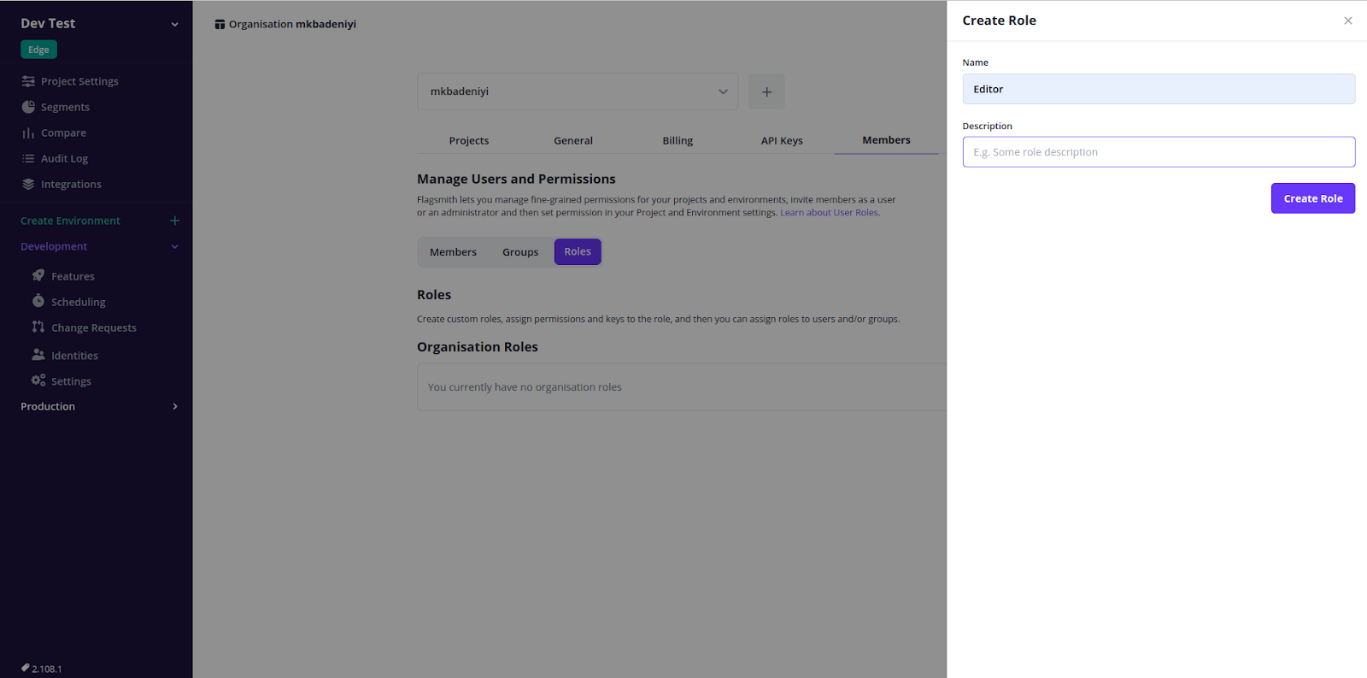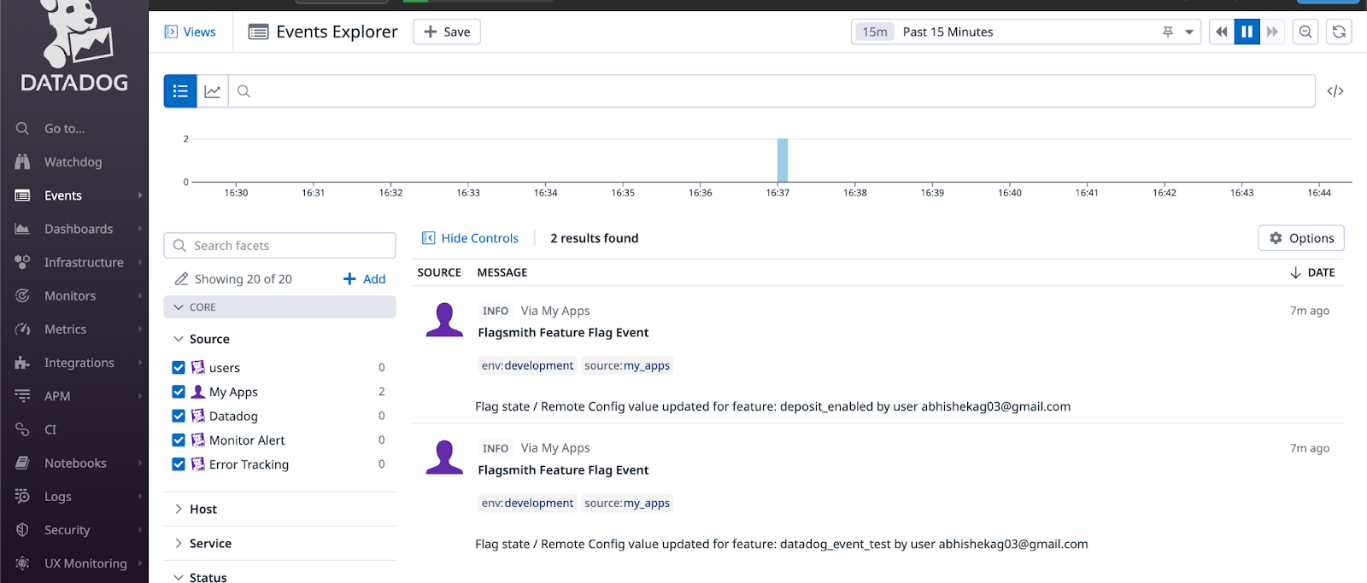What is the Four Eyes Principle? A Developer's Guide to Safer Flag Changes

You've been there. It's 3 PM on a Friday, and someone on your team just toggled a feature flag on in production without a single review.
Next thing you know you’re spending the entire evening untangling an incident that could have been caught with one extra set of eyes.
This is the problem with moving fast in enterprise software: speed without oversight creates fragility. You want your team to ship quickly, but you also need controls that prevent mistakes.
That’s what the four-eyes principle helps with.
In this guide, you'll learn what the four eyes principle actually means, why it matters for feature flagging, and how to implement it in a way that scales with your team.
What is the four eyes principle?
The four eyes principle is a governance control that requires at least two people to review and approve any critical action before it takes effect. The name comes from a simple idea: two pairs of eyes catch more than one.
You'll find this principle across industries where the cost of risk is too high. When the stakes are high, you don’t rely on a single person’s judgement.
For example, banks use it to authorise large transactions and nuclear facilities use it to validate safety precautions.
In software development, the four eyes principle translates to requiring approval workflows for changes that could impact:
- System stability
- Security
- Compliance
- User experience
You don’t have to rely on just one developer to push changes into production anymore. They have to get it reviewed by a peer or senior developer and get it approved first.
Is the 4 eyes principle the same as segregation of duties?
Not really. Segregation of duties (SoD) separates responsibilities so no single person completes a sensitive process from start to finish.
For example, in a bank, the person who submits a payment request can't approve it and this helps prevent fraud.
When you’re implementing feature flags, a developer proposes a flag change and a team lead approves it. The developer can't approve their own change (SoD), and the team lead has to review the flag before approving (four eyes).
How does the four eyes principle relate to corporate governance and internal controls?
The four eyes principle is an internal control mechanism within governance frameworks. Governance decides who’s responsible and who’s accountable for certain actions—and internal controls enable it through specific procedures.
In an engineering organisation, this means governance decides how deployment workflows work. If your organisation has to comply with certain financial or healthcare regulations, the 4-eyes principle lets you enforce those approval processes with clear audit logs.
Why does the 4-eyes principle matter for feature flagging?
As feature flags give you complete control over production behaviour, that power comes with risk. You don’t want to toggle new functionality for thousands of users without having at least two people involved in that process.
Here are a few reasons why:
It reduces the potential for incidents
Every production incident involving a feature flag involves someone making a change in isolation without considering (or knowing) the consequences.
By ensuring that any flag changes that will impact important features get seen by at least two team members, you bypass the risk of an accident.
It makes sure you have an audit trail
In regulated industries, documentation matters as much as technical implementation.
If an auditor asks: "Who approved enabling this flag that affected customer data processing?" You need a clear answer with timestamps and documented review.
The four-eyes principle enables that—especially when you have an audit trail and approval workflow to back it up.
It lets you move fast without breaking things
Your team is always under the pump. That’s why it’s normal for developers to skip approvals when they’re informal or optional in nature.
But if you have the processes (and tooling) in place to ensure that’s not the case, everybody operates under the same constraints.
A 2 AM urgent fix still follows the same protocol as a calculated 12 PM release.
It enables knowledge transfer as your organisation grows
The principle also scales in ways that informal reviews don't.
When your team has five people, everyone knows what everyone else is working on. At 50+ people across multiple teams, that visibility disappears.
The four eyes principle creates structured touchpoints where knowledge transfers naturally as part of the approval process.
How to implement the 4-eyes principle in your development workflows
Here are a few ways in which you can implement the 4-eyes principle:
1. Define approval requirements based on flag risk
Not all your flags carry the same risk. Start by categorising your flags into tiers based on their potential impact.
For example, a feature flag that touches sensitive data should require the 4-eyes principle. But one that’s toggled on/off for changing a button colour doesn’t need one. It reduces the administrative burden and keeps processes focused on the things that truly matter.
2. Set up role-based access control (RBAC)
Your approval system needs to differentiate between who can propose changes and who can approve them. RBAC lets you define these boundaries clearly. For instance, in Flagsmith, we delineate it based on user groups and individual users.
For each user or group, you can let them make changes based on access to:
- Organisation
- Project
- Environment

This way, only the right users have access to the right environments and projects. A junior developer doesn’t need to access the foundational systems if they don’t have the training or experience in place.
3. Enforce approvals through change requests
A change request is a formal “proposal” of sorts that requires explicit approval before you implement a change.
When a developer wants to enable a flag, adjust targeting rules, or modify remote config values, they can create a change request that describes what's changing and why.
This creates an audit trail for security and compliance. The reviewer can:
- See exactly what's being proposed
- Comment with questions or concerns
- Approve or reject the change
If something goes wrong later, you have a complete record of the change request.
4. Build audit trails automatically
Every flag change should generate an audit log entry that captures who did what and when. It helps you debug incidents, understand feature rollout history, and identify patterns in how your team uses flags.
Good audit logs record more than just "flag enabled." They capture the full context:
- Who requested the change
- Who approved it
- What the previous state was
- What targeting rules were applied
- Any comments or justifications

Example of an audit trail in Datadog (through Flagsmith)
5. Create emergency bypass procedures
The four eyes principle shouldn't prevent rapid incident response. You need to include exception paths so that you’re not stuck waiting on an approval during an outage or security incident.
So, define what qualifies as an emergency and what approvals can be bypassed. For example, platform engineers can toggle kill switches without approval during active incidents. But those actions should trigger automatic notifications to senior leadership and require post-incident review.
6. Integrate approvals into CI/CD pipelines
Your deployment pipeline should respect approval states. If a flag requires approval but hasn't received it, automated deployments that depend on that flag should fail or send out a warning. This prevents situations where approved code tries to use an unapproved flag configuration.
4 mistakes to avoid while using the 4-eyes principle
Here’s how you can avoid common pitfalls that come with relying on the 4-eyes principle:
1. Allowing self-approvals through workarounds
You can avoid many incidents using the 4-eyes principle, but only if you actually enforce it. If your team is able to work around them by creating flags elsewhere and promoting them without review, it’ll be hard to solve the governance problem.
Consider using additional measures like RBAC and having clear documentation around these processes.
As much as you trust your team, it should be technically impossible to skip approvals for high-risk changes. This way, you’ll be able to enforce it regularly.
2. Skipping the audit trail review
Many engineering teams have access to all the audit logs they need but never actually use the data. In fact, they might only review it when they’re doing a compliance audit.
That’s why you need to build in time to review approval workflows regularly. During these reviews, you should:
- Review flags that cause confusion or overlap with other flags
- Remove duplicate flags with similar workflows
- Re-assign flags in case team members change
- Look at old and current incidents to assess points of failure
Use this data to refine your risk tiers and improve your documentation.
3. Relying purely on manual reviews
While the 4-eyes principle requires human review, there’s no reason the whole process needs to be manual. There’s a chance that both reviewers miss the same problem or get “banner blindness” reviewing multiple requests at one.
In these cases, automation would work really well. You can use it to automate basic checks like:
- Checking if the flag change matches naming conventions
- If the targeting rules are syntactically correct
- Reviewing whether the new flag conflicts with existing flags
- Tagging the right reviewers when needed
4. Creating a rubber-stamp culture
The four eyes principle only works when both pairs of eyes actually look. If you don’t rotate reviewers regularly, or one reviewer simply defers to another's judgment, the whole process just becomes a formality.
In short: you’re creating a rubber-stamping culture. And this results in a false confidence in your governance.
Make sure you rotate reviewers and encourage them to ask questions or leave comments. As a result, you’ll have better notes on why changes are made.
Build trust in your organisation using the 4-eyes principle
The four-eyes principle is about building systems that let you move fast safely.
When approvals, audit trails, and risk-based reviews are part of your everyday workflow, governance stops feeling like red tape.
In the long run, you’ll create transparency, accountability, and shared confidence across your organization. Because when everyone can see why a change was made and who approved it, trust is the baseline for every action your team takes.
Interested in seeing how Flagsmith uses the 4-eyes principle for feature flagging? Try it for free today.

.webp)

























































.png)
.png)

.png)

.png)



.png)























.png)












